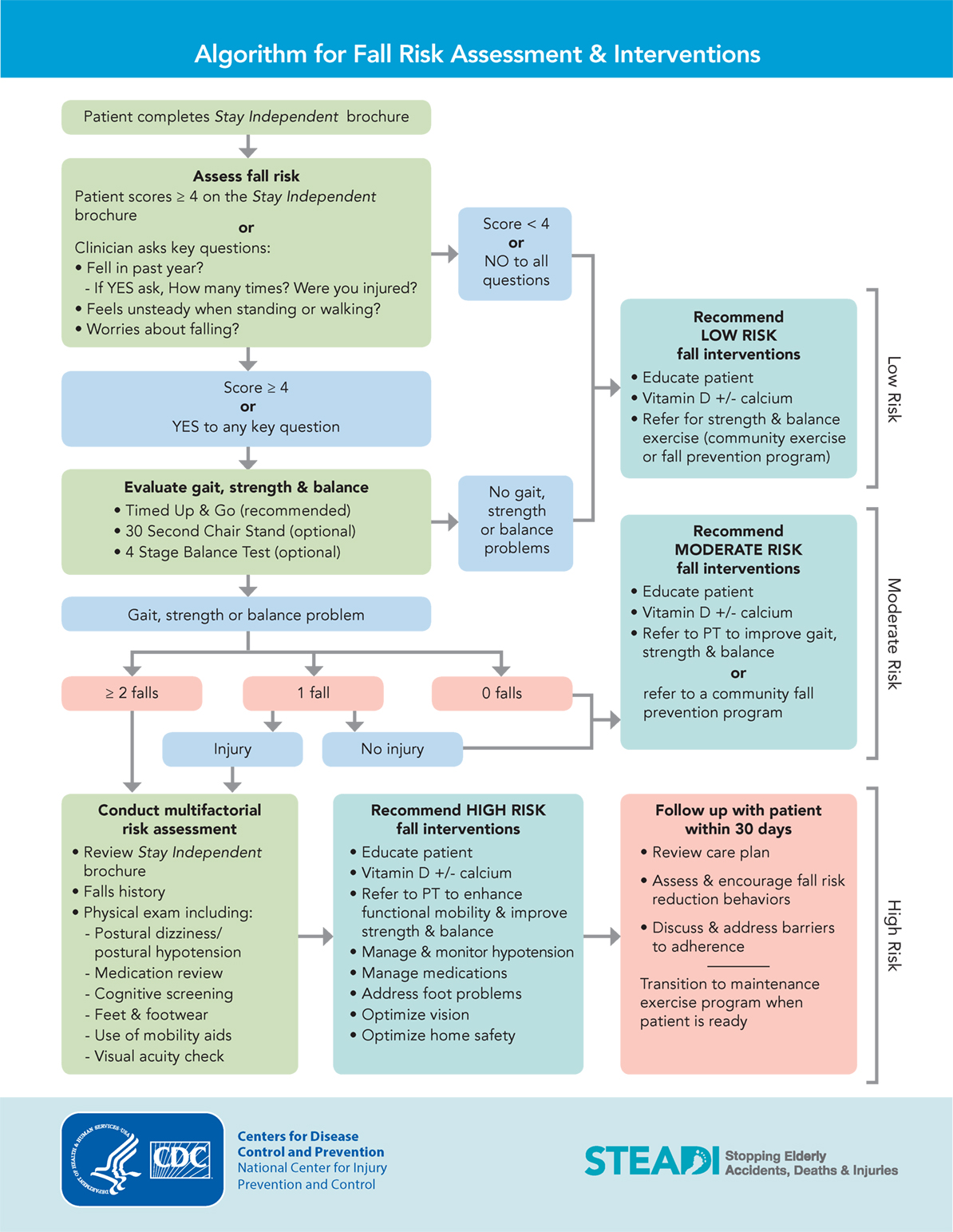The Best Guide To Dementia Fall Risk
The Ultimate Guide To Dementia Fall Risk
Table of ContentsDementia Fall Risk - QuestionsThe 5-Minute Rule for Dementia Fall RiskThe 8-Minute Rule for Dementia Fall RiskAll about Dementia Fall Risk
A loss risk assessment checks to see how likely it is that you will fall. The analysis generally consists of: This includes a collection of questions concerning your general health and if you have actually had previous drops or troubles with equilibrium, standing, and/or strolling.Interventions are suggestions that may decrease your risk of falling. STEADI consists of three actions: you for your threat of dropping for your danger elements that can be enhanced to try to protect against drops (for instance, equilibrium troubles, damaged vision) to lower your risk of dropping by utilizing efficient approaches (for instance, giving education and resources), you may be asked several questions including: Have you fallen in the previous year? Are you stressed regarding dropping?
You'll sit down once more. Your copyright will check how much time it takes you to do this. If it takes you 12 seconds or more, it may mean you are at higher threat for a fall. This test checks toughness and equilibrium. You'll sit in a chair with your arms crossed over your upper body.
The positions will get harder as you go. Stand with your feet side-by-side. Relocate one foot midway forward, so the instep is touching the big toe of your various other foot. Relocate one foot completely in front of the various other, so the toes are touching the heel of your other foot.
The Facts About Dementia Fall Risk Revealed
The majority of falls happen as a result of numerous adding aspects; consequently, handling the threat of falling starts with identifying the factors that contribute to drop threat - Dementia Fall Risk. Several of the most pertinent danger factors consist of: History of prior fallsChronic medical conditionsAcute illnessImpaired stride and balance, reduced extremity weaknessCognitive impairmentChanges in visionCertain risky medications and polypharmacyEnvironmental elements can additionally increase the threat for drops, consisting of: Insufficient lightingUneven or damaged flooringWet or unsafe floorsMissing or harmed handrails and get barsDamaged or poorly fitted equipment, such as beds, wheelchairs, or walkersImproper use assistive devicesInadequate supervision of individuals living in the NF, consisting of those that exhibit hostile behaviorsA successful fall danger management program calls for a detailed scientific assessment, with input from all participants of the interdisciplinary team

The treatment strategy need to likewise consist of treatments that are system-based, such as those that advertise a risk-free setting (ideal lighting, hand rails, get bars, etc). The performance of the treatments ought to be examined occasionally, and the care strategy changed as needed to mirror adjustments in the autumn threat analysis. Executing a fall danger administration system using evidence-based best method can decrease the frequency of falls in the NF, while restricting the potential for fall-related injuries.
Everything about Dementia Fall Risk
The AGS/BGS standard advises screening all adults aged 65 years and older for autumn danger annually. This screening is composed of asking patients whether they have fallen 2 or more times in the previous year or sought clinical focus for an autumn, or, if they have actually not dropped, whether they really feel unstable when strolling.
People that have fallen once without injury should have their equilibrium and stride assessed; those with stride or balance problems should get extra visit analysis. A history of 1 fall without injury and without stride or balance problems does not require more evaluation beyond ongoing yearly fall threat screening. Dementia Fall Risk. A fall threat assessment is required as part of the Welcome to Medicare assessment

The Buzz on Dementia Fall Risk
Recording a falls history is one of the top quality signs for fall avoidance and administration. Psychoactive medicines in specific are independent predictors of falls.
Postural hypotension can usually be alleviated by minimizing the dose of blood pressurelowering drugs and/or stopping medicines that have orthostatic hypotension as an adverse effects. Use above-the-knee support hose and resting with the head discover here of the bed elevated may additionally reduce postural decreases in blood pressure. The recommended aspects of a fall-focused health examination are displayed in Box 1.

A yank time higher than or equivalent to 12 secs suggests high autumn risk. The 30-Second Chair Stand examination assesses lower extremity visit the website strength and equilibrium. Being not able to stand up from a chair of knee elevation without making use of one's arms indicates enhanced loss risk. The 4-Stage Equilibrium examination examines fixed balance by having the individual stand in 4 settings, each progressively a lot more challenging.